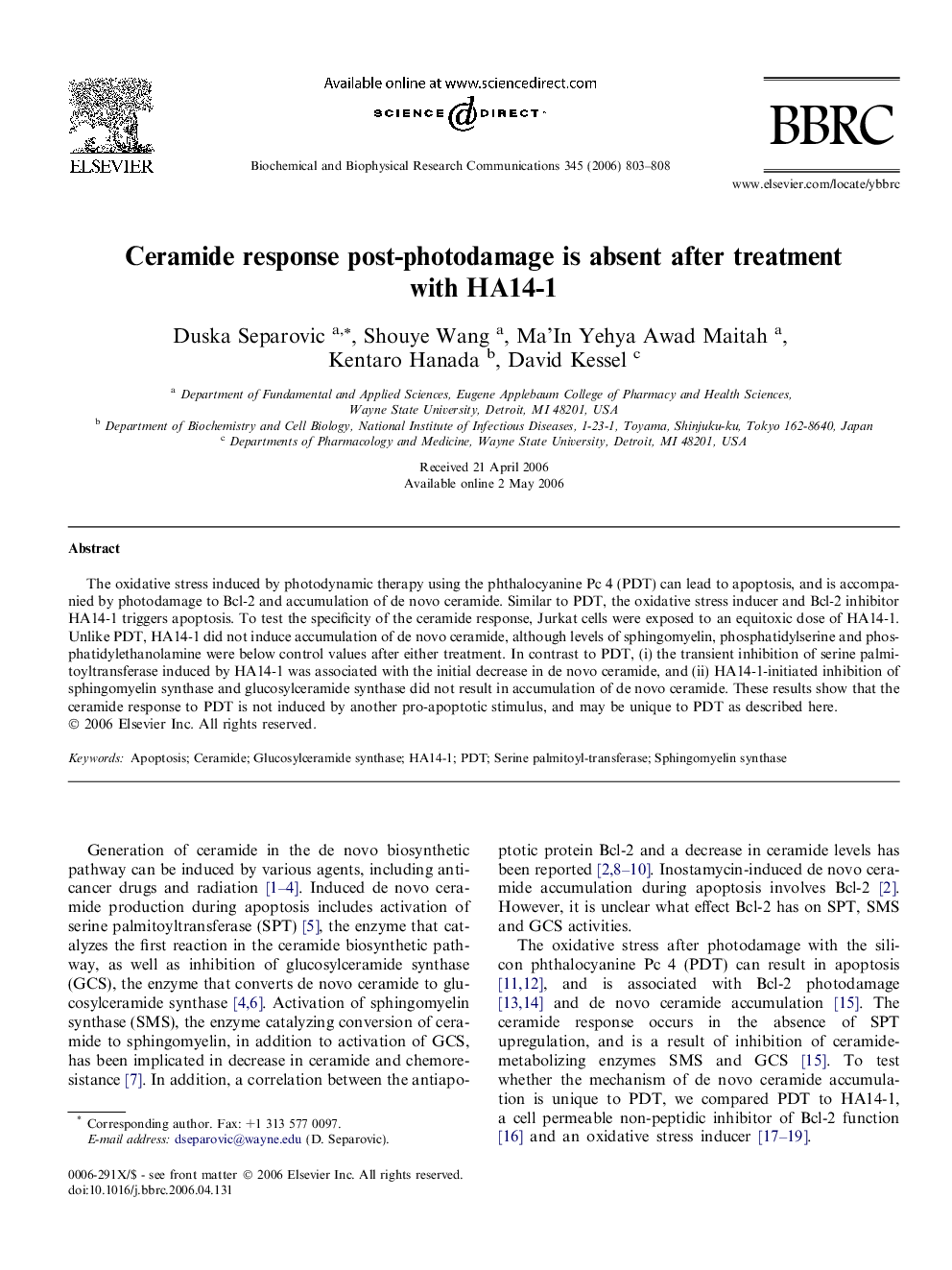| Article ID | Journal | Published Year | Pages | File Type |
|---|---|---|---|---|
| 1940306 | Biochemical and Biophysical Research Communications | 2006 | 6 Pages |
The oxidative stress induced by photodynamic therapy using the phthalocyanine Pc 4 (PDT) can lead to apoptosis, and is accompanied by photodamage to Bcl-2 and accumulation of de novo ceramide. Similar to PDT, the oxidative stress inducer and Bcl-2 inhibitor HA14-1 triggers apoptosis. To test the specificity of the ceramide response, Jurkat cells were exposed to an equitoxic dose of HA14-1. Unlike PDT, HA14-1 did not induce accumulation of de novo ceramide, although levels of sphingomyelin, phosphatidylserine and phosphatidylethanolamine were below control values after either treatment. In contrast to PDT, (i) the transient inhibition of serine palmitoyltransferase induced by HA14-1 was associated with the initial decrease in de novo ceramide, and (ii) HA14-1-initiated inhibition of sphingomyelin synthase and glucosylceramide synthase did not result in accumulation of de novo ceramide. These results show that the ceramide response to PDT is not induced by another pro-apoptotic stimulus, and may be unique to PDT as described here.
